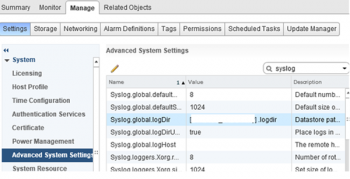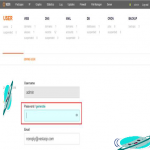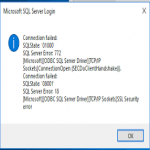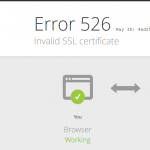IIS error 500.19 occurs to a website that is hosted in Windows using IIS.
This occurs due to the permission of the document root or due to the ASP.NET.
Here at Ibmi Media, as part of our Server Management Services, we regularly help our Customers to resolve IIS related errors.
In this context, we shall look into steps to resolve IIS error 500.19.
How to fix IIS error 500.19 ?
Recently we had a customer who was facing an 'IIS error 500.19'. On analyzing the error, the permission for the IIS user to document root of the website was changed.
Here, we will look into steps to give the application pool user permission.
Permission for an application pool user:
First, we verify the permission of the IIS user for the document root.
Then we give the necessary permissions to the domain's web folders.
i. If the Plesk panel is available we can change the permission from the panel.
ii. Login to Plesk >> File manager >> Select home directory >> Click change permission.
iii. Finally, we select the required permission and click Apply.
ASP.NET version
Another reason for this error could be the ASP.NET version. If the latest ASP.NET version is not supported by the website then the error occurs. The reason is that when we install the latest ASP.NET version on the server sometimes the default version changes to the new version. Therefore, to resolve the error our Support Engineers change the ASP.NET version. Here is how we do it:
i. Start >> Administrative Tools >> Internet Information Services (IIS) Manager >> Application pool
ii. Then we select the domain’s application pool and right-click on it.
iii. After that, we click on the advanced setting, and from the drop-down, we change the ASP.NET version.
If the Plesk panel is available then we can change the version from the panel:
i. Login to Plesk >> Hosting setting.
ii. From the drop-down Microsoft ASP.NET Support change the version.
ASP.NET feature missing
If the feature for ASP.NET not added during installation the error will occur.
Here are the steps how we enable the feature:
1. First, we open server manager and then expand roles.
2. Now, we click on the webserver. Then under the Role Services section, we click on Add Role service. After that, we check the box for ASP.NET.
3. Then we click next. Finally, we click install.
[Need urgent assistance in fixing IIS errors? – We'd be happy to help you. ]
Conclusion
This article will guide us on steps to fix #IIS #error 500.19. To fix the error, we verify the user permissions and make sure the ASP.NET version is right.
The error 500.19 is an internal server error often occurring on a server using Microsoft IIS software. It indicates that the configuration data for the page is invalid.
To solve the issue, delete the malformed XML element from the Web.config file or from the ApplicationHost.config file.
This article will guide us on steps to fix #IIS #error 500.19. To fix the error, we verify the user permissions and make sure the ASP.NET version is right.
The error 500.19 is an internal server error often occurring on a server using Microsoft IIS software. It indicates that the configuration data for the page is invalid.
To solve the issue, delete the malformed XML element from the Web.config file or from the ApplicationHost.config file.











